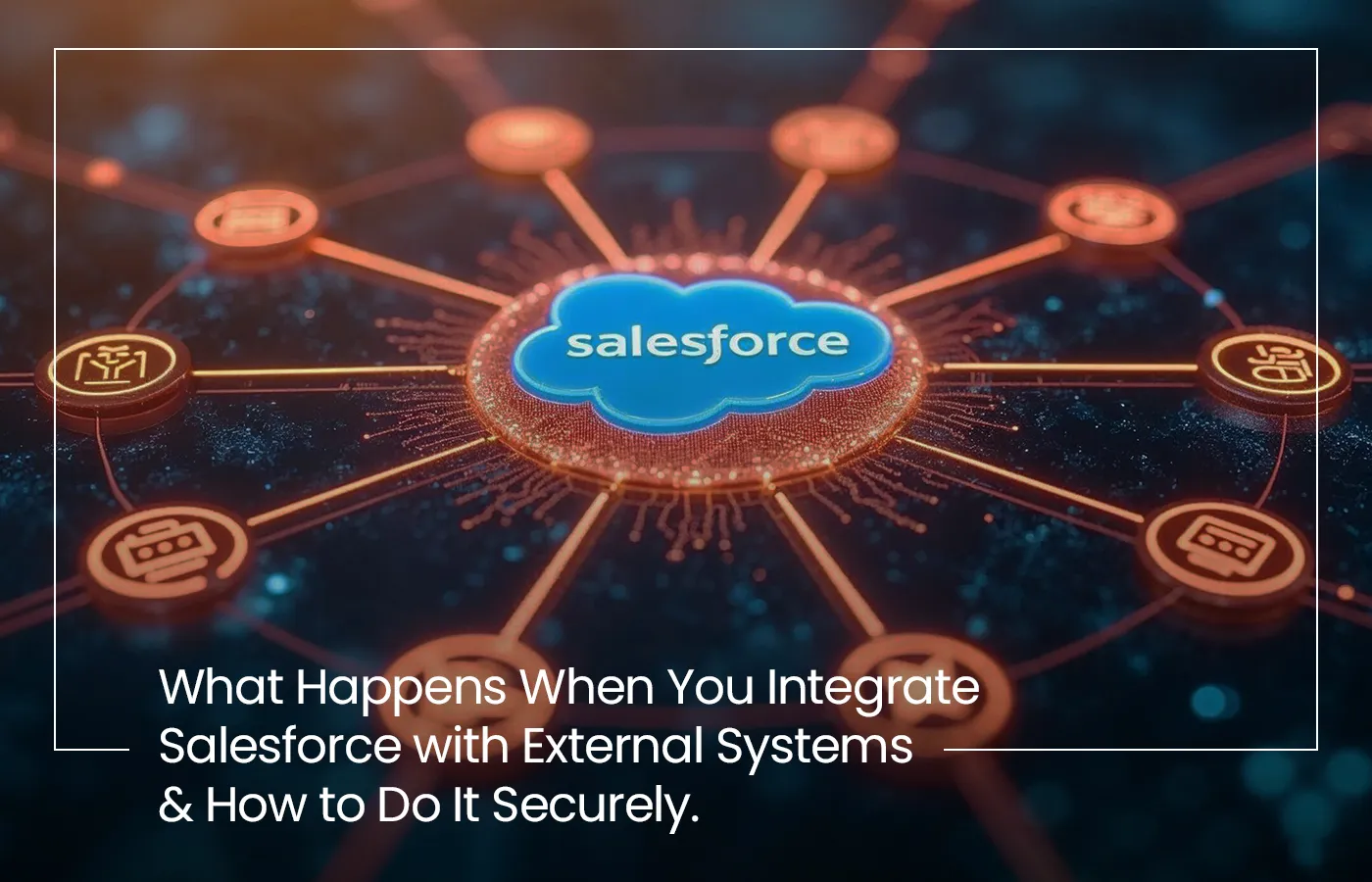What Happens When You Integrate Salesforce with External Systems and How to Do It Securely

Introduction
Salesforce is the heart of many organizations’ operations managing customers, leads, opportunities, and support. But as your business grows, Salesforce must connect with other systems like your accounting software, eCommerce platform, or internal ERP to provide a complete, real-time view of your operations.
That’s where Salesforce integration with external systems comes in. When done well, it unlocks speed, visibility, and automation. When done poorly, it introduces security risks, complexity, and frustration.
In this blog, we’ll explore:
- What Salesforce integration with external systems really means
- How to ensure these integrations are secure
- Why using a Salesforce Native App like SOLFI simplifies everything
- The hidden complexities you avoid by going native
What Does Salesforce Integration with an External System Mean?
At its core, Salesforce integration means connecting your Salesforce CRM to another business system so that they can share data, automate workflows, and help teams work faster with a unified source of truth.
Examples include:
- Syncing orders from your Magento or Shopify store into Salesforce
- Pushing Salesforce customer records into Zoho Books to generate invoices
- Receiving payment status updates from QuickBooks into Salesforce
- Automating ticket creation in Salesforce Service Cloud from your internal helpdesk
Without integration, teams manually enter or transfer data between systems wasting time, increasing errors, and slowing down your business. Explore the Salesforce Integrations with External Applications offered by SOLFI: https://solfi.com.au/key-solutions/
With integration, data moves seamlessly, securely, and in real time.
The Hidden Risks of External Integrations
Every time you connect Salesforce to an external application, you expand the surface area of your data and your risk.
Here’s why:
- Data may travel across unsecured servers or through middleware tools that lack compliance.
- Some integrations rely on custom APIs that need constant monitoring and debugging.
- Many third-party platforms store copies of your data externally, creating regulatory concerns for GDPR, HIPAA, and APRA.
- Inconsistent updates between systems can result in conflicting records or sync failures.
How to Ensure Secure Salesforce Integrations
Security must be baked into your integration strategy from day one. Here are five principles to follow:
1. Use strong authentication
Always connect external systems to Salesforce using secure protocols like OAuth 2.0, with API keys or tokenized access.
2. Control access with roles and profiles
Limit which users, apps, or systems can access specific records in Salesforce.
3. Encrypt everything
Encrypt sensitive data both in transit and at rest especially financial, health, or customer data.
4. Enable logging and monitoring
Track data movement, sync activity, and user access to spot anomalies and provide audit trails.
5. Minimize external data exposure
Avoid middleware tools or services that store or transform your data outside of your Salesforce org unless necessary.
Why Native Matters: The SOLFI Advantage
This is where a Salesforce Native App like SOLFI changes the game.
SOLFI is built entirely inside the Salesforce platform using Salesforce’s own tools, architecture, and security model. That means:
- No external servers
- No middleware
- No data ever leaves Salesforce
Everything from integration logic to data processing happens inside your Salesforce org, in real time. (https://solfi.com.au/what-are-native-salesforce-apps-why-are-they-better/)
Benefits of Using a Native Salesforce App Like SOLFI
|
Non-Native Apps |
Salesforce Native App (SOLFI) |
|---|---|
|
Data leaves Salesforce |
Data stays entirely within your org |
|
Requires developer support |
Built for admins and business users |
|
External API limitations |
Leverages Salesforce’s internal capabilities |
|
Complex interfaces |
Unified Salesforce UI |
|
More risk, more monitoring |
Inherits Salesforce’s trusted security |
|
Separate updates |
Automatically aligns with Salesforce platform upgrades |
Complexities You Avoid with a Native App
When you choose a native app like SOLFI, you’re not just gaining speed you’re eliminating entire categories of risk and maintenance.
You avoid
- API throttling and failures
- Delays from third-party infrastructure
- Security reviews of external data platforms
- Middleware licensing or server costs
- Long implementation cycles and IT backlog
Instead, you get
- Seamless, zero-code deployment
- Enterprise-grade security
- Instant data sync
- Admin-level control and customization
Choose Secure, Native Integration
Salesforce integrations are the key to scaling your operations, automating manual tasks, and delivering a better customer experience. But the method matters.
Native apps like SOLFI aren’t just easier; they’re smarter, safer, and built to grow with your business.Want to simplify your integrations with zero code and maximum security? Book your personalized demo of SOLFI now.
